Bedding vs. Perennial Planting
Get more out of your planting with perennials
Bedding plants generally consist of annuals, biennials, or tender perennials. A few species which are popularly used for bedding are geraniums, pansies, and cosmos. They are known as bedding plants as they are often used to create flower beds, and container displays. Annuals complete their entire life cycle within one growing season, whilst biennials’ life cycles take two years, usually producing foliage during their first year, and flowering during their second. Tender perennials can last for over two years, but can’t survive the winter and need to be brought inside during the colder months for protection.
Bedding plants became popular during the Victorian era. In the 19th century, developments in plant breeding and greenhouse technology allowed for the growth of exotic and colourful plants in large numbers, and displayed in precise, ornamental arrangements. Traditionally, you often see annual bedding plants in public spaces, such as parks, streetscapes, and community gardens. Bedding plants are a popular choice for parishes and councils to brighten up green spaces within British towns and villages. They provide instant impact in high-footfall areas, such as town centres and parks, and are suitable for a range of planting options, including planters, hanging baskets, and raised beds. Bedding plants are also popular in private gardens, to fill gaps in planting areas, and fill containers. They provide colour and an abundance of showy, vibrant flowers within a short period of time, but there are many drawbacks to their use, both for the environment and for gardeners who utilise them in their green space.
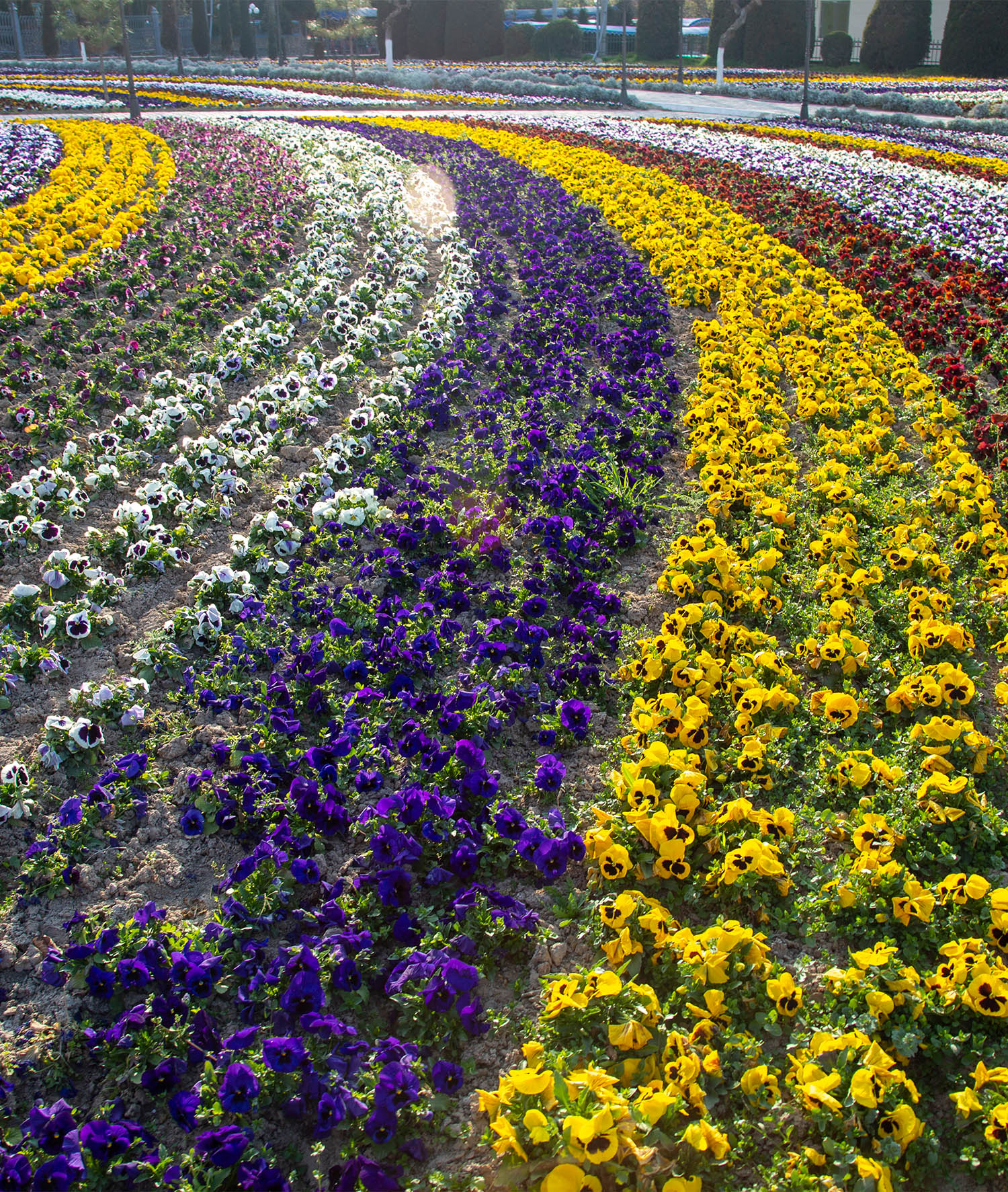
What are the disadvantages of bedding plants?
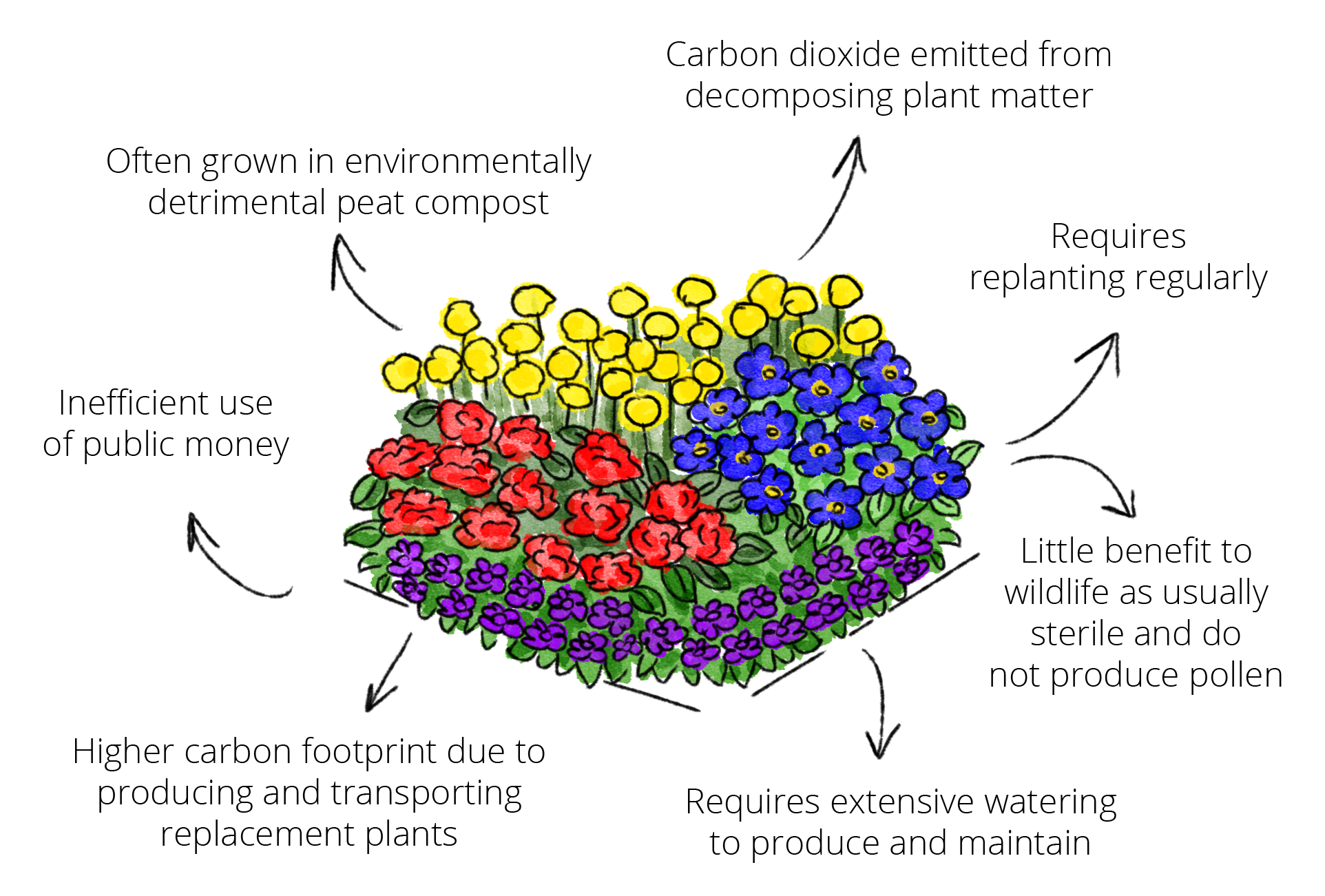
Most bedding plants are grown using peat-based growing media, which is a finite resource made from partially composted organic matter over thousands of years. 1m of peat takes around 1,000 years to form, and the annual commercial extraction of peat removes a staggering five hundred years’ of growth. Peat is formed in peatlands, which are among the most efficient carbon sinks on Earth, and is created under specific waterlogged conditions. Extracting peat from peatlands causes locked up carbon to be released as CO2 into our atmosphere, and this contributes to climate change. Find out more about the problem with peat by reading our blog.
In addition to the CO2 that is emitted when using peat-based compost, bedding plants also release CO2 as part of the carbon cycle. During photosynthesis, bedding plants absorb CO2 and store it within their tissues, and when the plants decompose, they release it into the atmosphere. With bedding plants lasting for just one season, they create a significant amount of plant waste each year. A further sustainability concern is packaging, as bedding plants are usually sold in plastic pots or polystyrene containers, and these cannot be recycled.
When it comes to maintenance, bedding plants require significant effort to keep them looking their best. They require regular feeding, deadheading, irrigation, and protection when it comes to garden pests. Whilst bedding plants provide a burst of vivid, brightly coloured blooms, they die back at the end of the season, where they then need to be replaced to maintain their visual appeal.
The production of bedding plants is also a highly controlled environment with high energy costs and unsustainable practices, for example, humidity and climate control systems, intensive irrigation, chemical fertilisers, lighting, temperature control, and chemical pest control. Often, bedding plants are bred for the desired aesthetic benefit, and to be sterile to insects; this, in turn, means no pollinator benefits.
Several types of chemicals are regularly used in the production of bedding plants, including pesticides, such as neonicotinoids, and fungicides. Neonicotinoids, in particular, have raised concerns regarding their impact on pollinators, including bees, as the chemical is absorbed into the plant, and therefore, can often be present in nectar and pollen. If bees feed on these plants, it can impact their nervous system, which significantly affects their ability to navigate, forage, and reproduce. Lower doses of Neonicotinoids can also weaken their immune systems, and can make them more susceptible to disease.
What can perennials offer as an alternative to bedding plants?
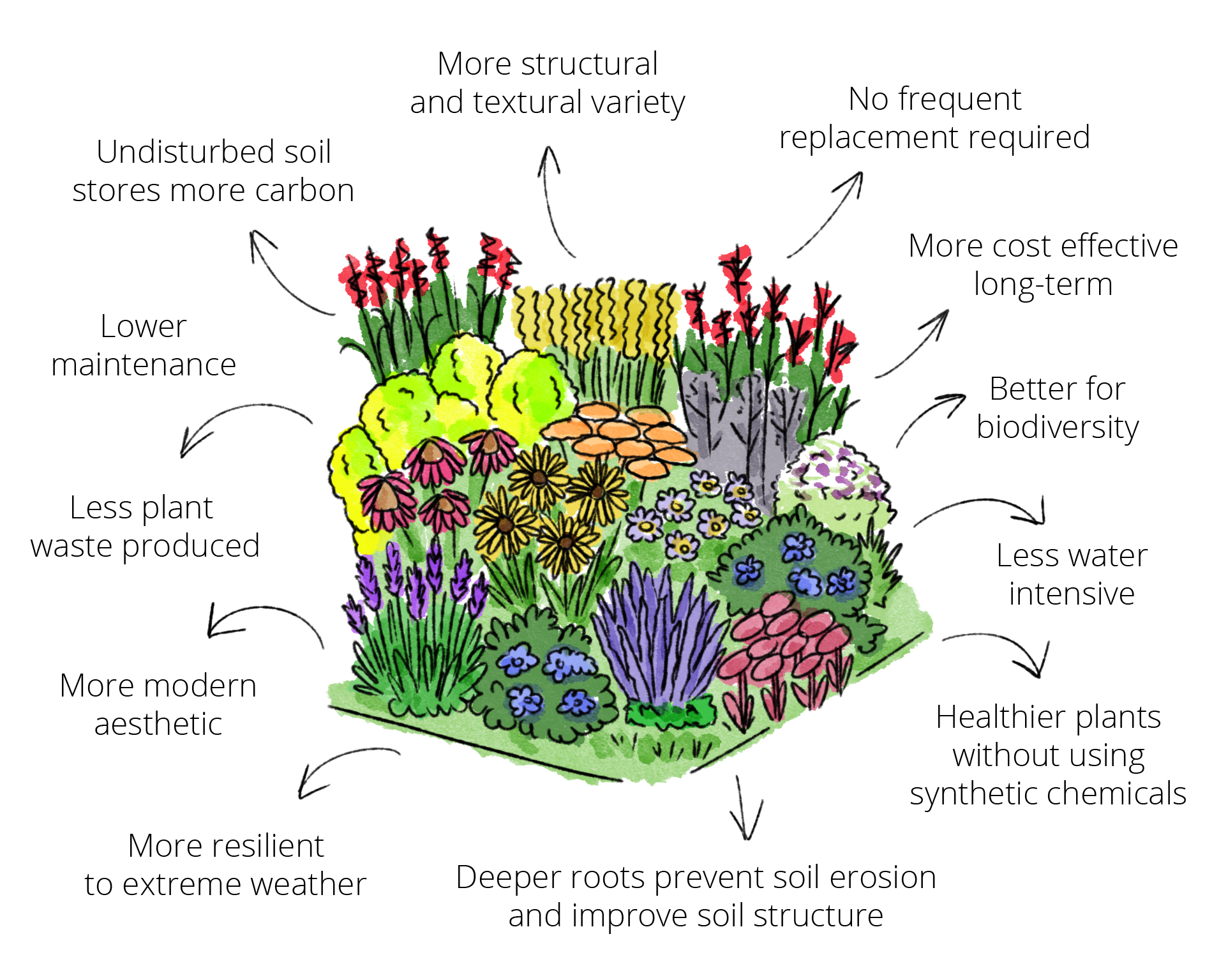
Planting perennials over bedding plants brings an array of benefits. Their seasonal variety and year-round interest provides visual appeal for a much longer period of time, and their attractive foliage, seed heads, and structural elements bring interest, even whilst they are dormant. An example is Hylotelephium, which in winter provides excellent structural interest, and is exceptionally striking with a dusting of frost. Perennials bring a wider variety of forms, shapes, and textures than traditional bedding plants, making them a popular choice for contemporary planting. They allow for naturalistic planting schemes, including prairie-style planting, whilst bedding schemes can feel old-fashioned due to their association with traditional, formal garden styles.
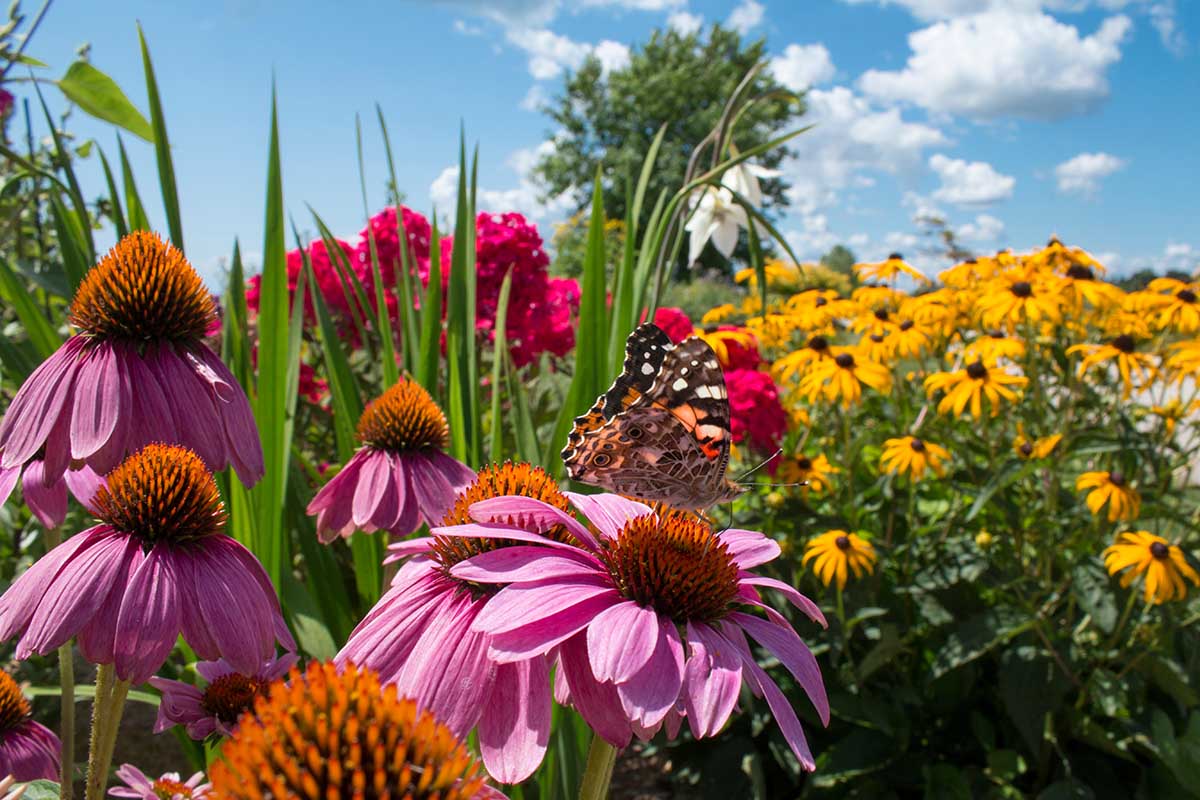
Perennials have a significantly longer lifespan than bedding plants. Many perennials provide a stunning flower display for around ten or more years, particularly if they have been grown under ideal conditions. The longevity of perennials also reduces the environmental impact associated with soil disturbance, the need for annual replanting, and the carbon footprint of transporting and replacing annuals.
There is also less ongoing maintenance required when planting perennials. Due to their deep root systems, once they are established, their water and fertiliser needs are much lower than annuals, and they do not require replanting each year. Their root systems also improve soil health, prevent erosion, and promote microbial activity. Beneficial microorganisms, such as mycorrhizal fungi and bacteria, play a crucial role in soil structure, nutrient cycling, and plant health. Soil health is a further benefit of promoting microbial activity, as healthy soil is more resilient to pests and diseases.
Perennials also provide significant benefits to local ecosystems and support biodiversity. They provide long-term habitats and food sources for pollinators, including bees and butterflies. It’s highly beneficial to encourage pollinators to your landscape, as pollination maintains biodiversity. It promotes the growth of crops and plants, which leads to a balanced ecosystem. Bedding, on the other hand, is generally bred to be sterile, and the process of replanting can disrupt habitats and reduce biodiversity.
Take a look at our perennial planting plan here.
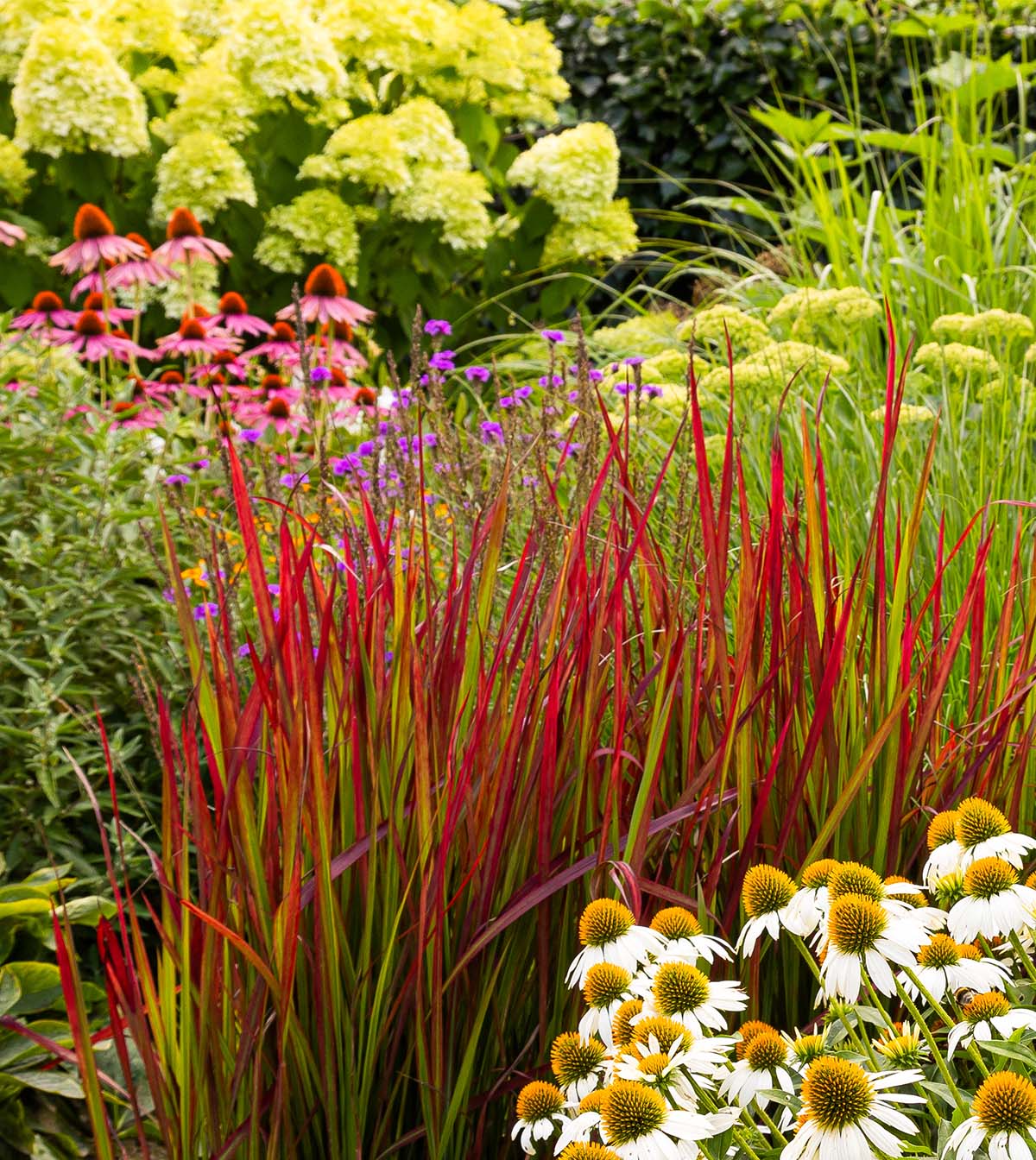
Our perennial recommendations
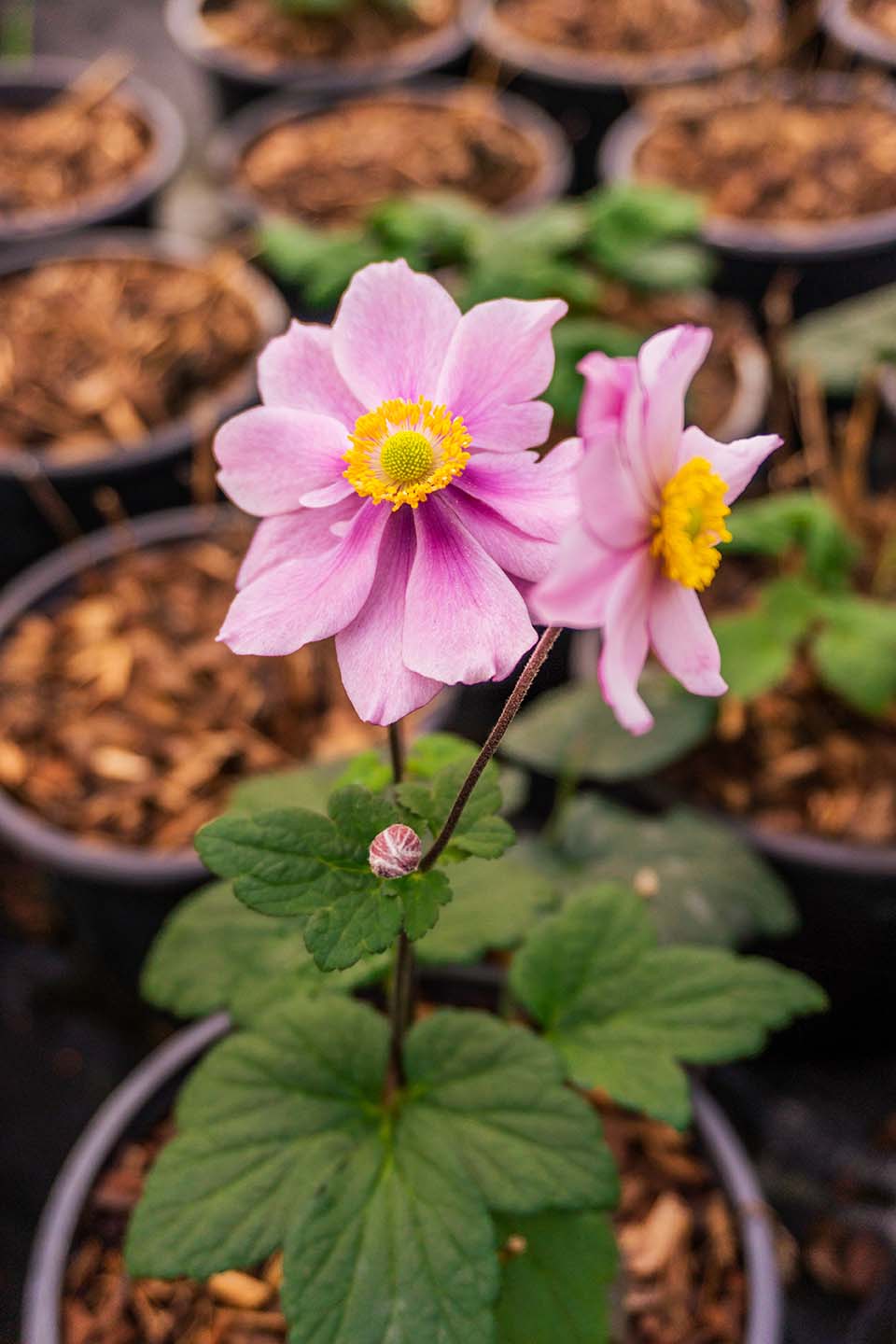
Anemone hupehensis ‘September Charm’
Anemone hupehensis ‘September Charm’
A perennial with dark green foliage and masses of pale pink, cup-shaped flowers on purple tinted, wiry stems. Flowers from July to September, and works well towards the back of a border in full sun to partial shade.
Aster × frikartii ‘Mönch’
This perennial blooms a profusion of lavender-blue daisies with striking yellow centres on strong stems. Flowering from late summer to early autumn, Aster × frikartii ‘Mönch’ is ideal for planting in the middle of a border, or in containers in full sun.
Delphinium
Delphiniums are a fantastic alternative to bedding plants with their showstopping colour. Throughout June and July, Delphinium blooms flower spikes in a range of colours, depending on the variety, such as blue, pink, and white. They are perfect for cottage gardens and look great as part of a herbaceous border.
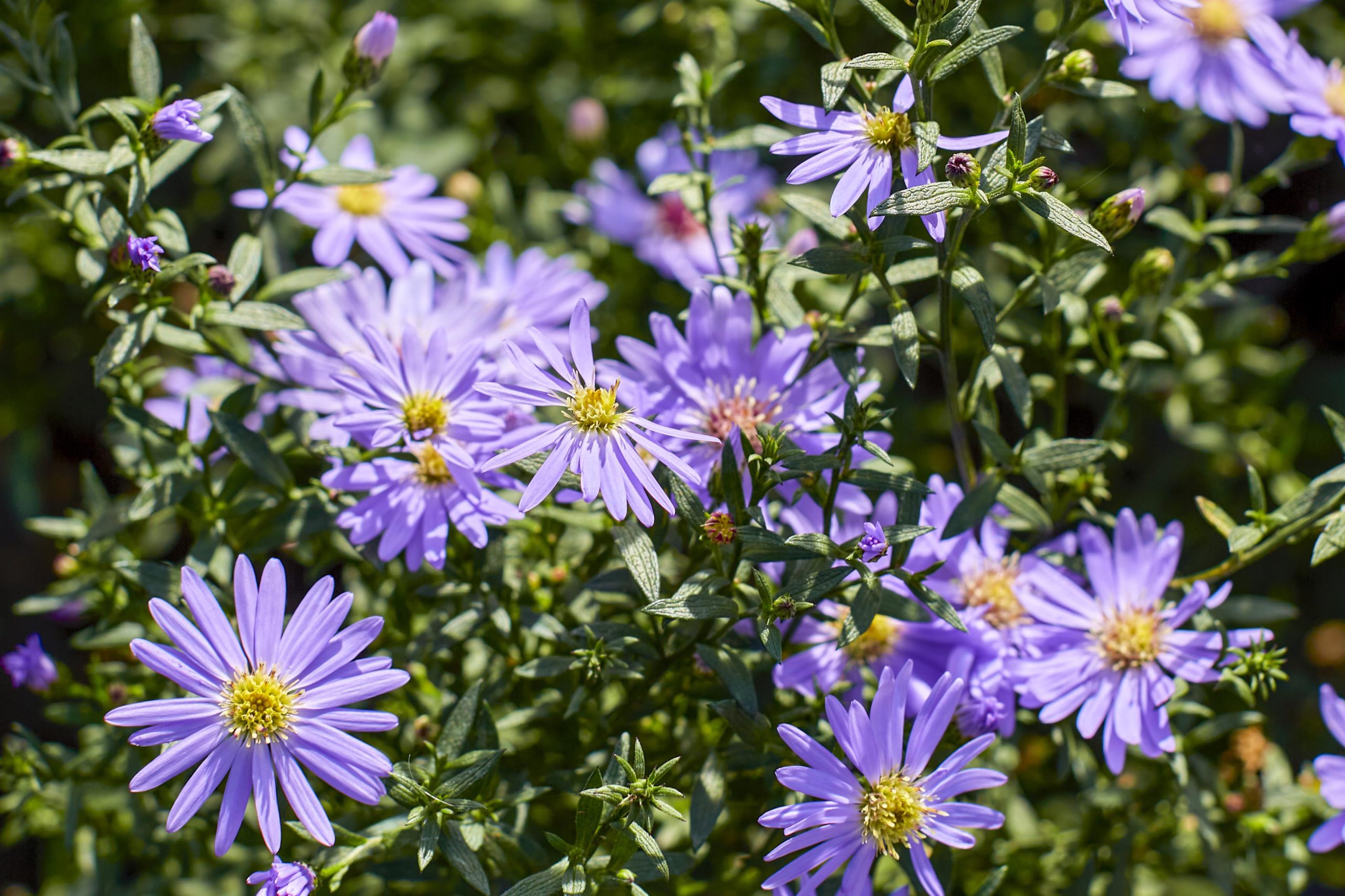
Aster × frikartii ‘Mönch’
Echinacea purpurea
An upright herbaceous perennial with ovate, hairy foliage and striking, large, solitary, pink flowers that feature a central, orange-brown disk. Looks lovely when planted in drifts in the middle or back of herbaceous borders. Prefers well-drained soil in a sunny position.
Geranium ‘Rozanne’
This geranium has lobed, marbled, mid-green foliage and stunning, lavender blue, saucer-shaped flowers. It has a long flowering period from early summer to mid-autumn, making it ideal as an alternative to bedding plants. Geranium ‘Rozanne’ prefers full sun to partial shade, in a well-drained soil. Great for groundcover or planting in containers.
Hylotelephium ‘Matrona’
An upright succulent species that grows up to around 70cm in height. It boasts purple stems bearing bronze leaves and flat heads of pink flowers that appear in summer and early autumn. Great for adding structure.
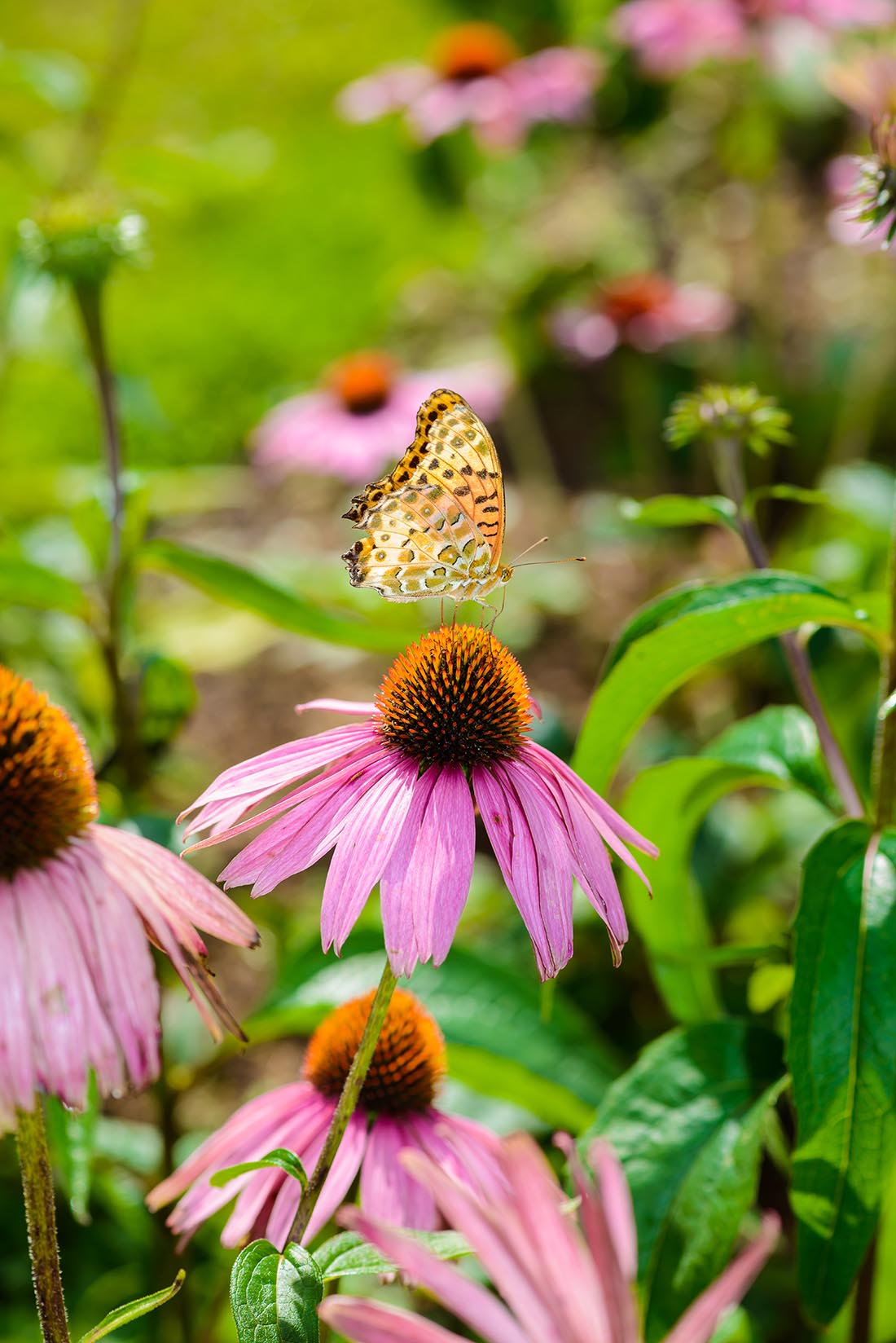
Echinacea purpurea
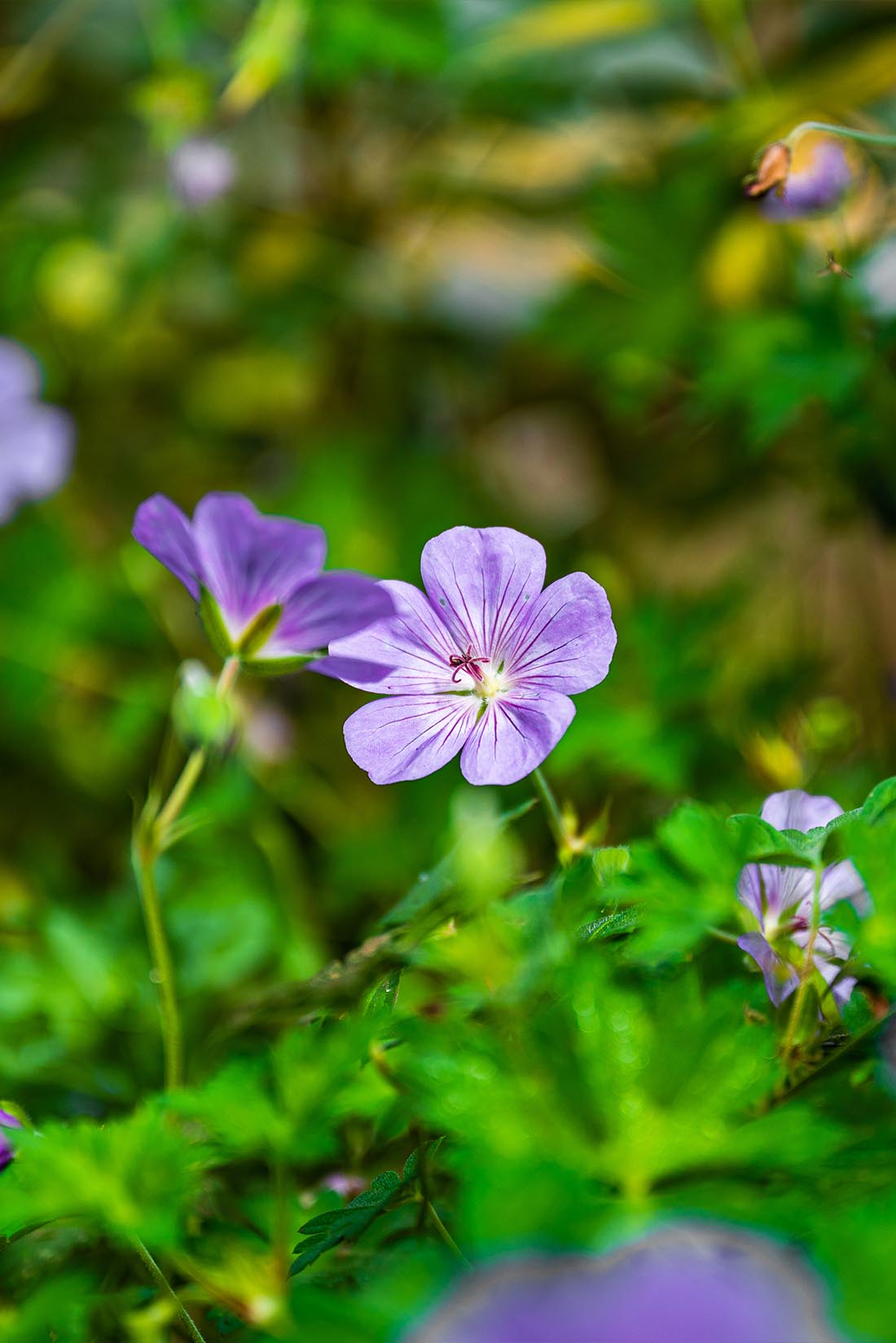
Geranium ‘Rozanne’
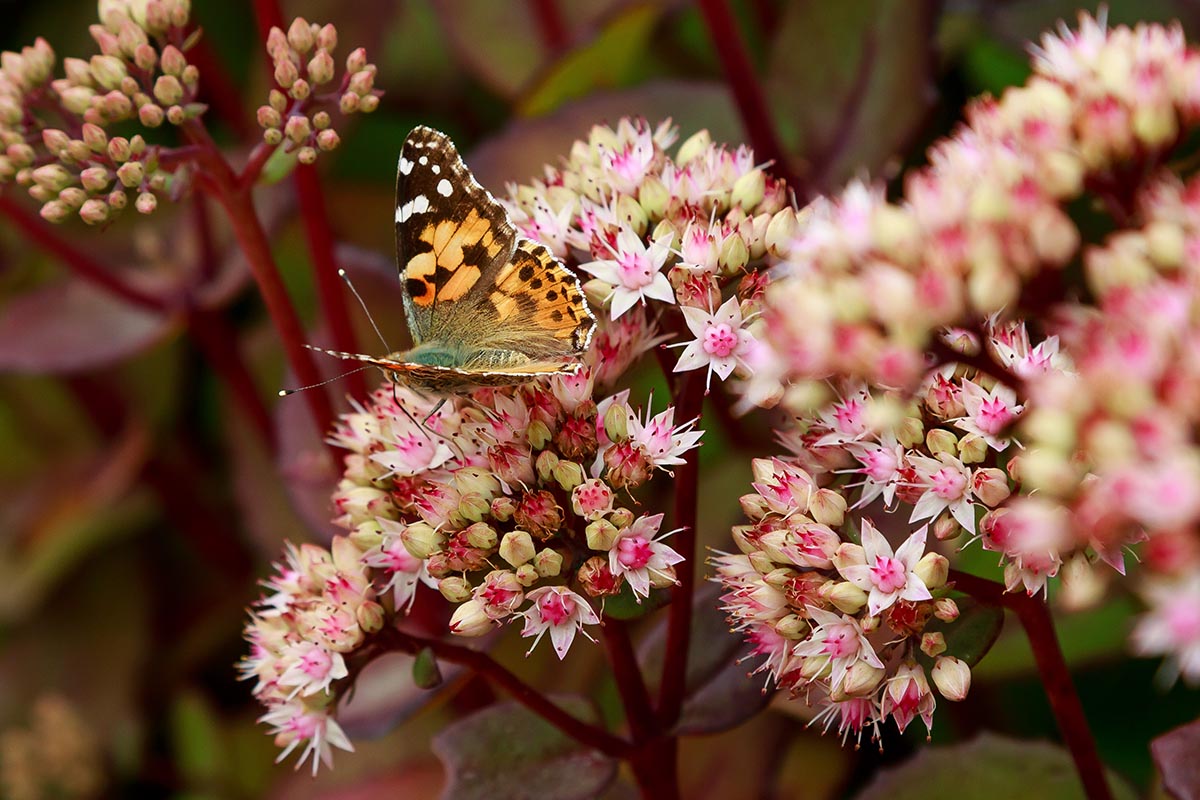
Hylotelephium ‘Matrona’
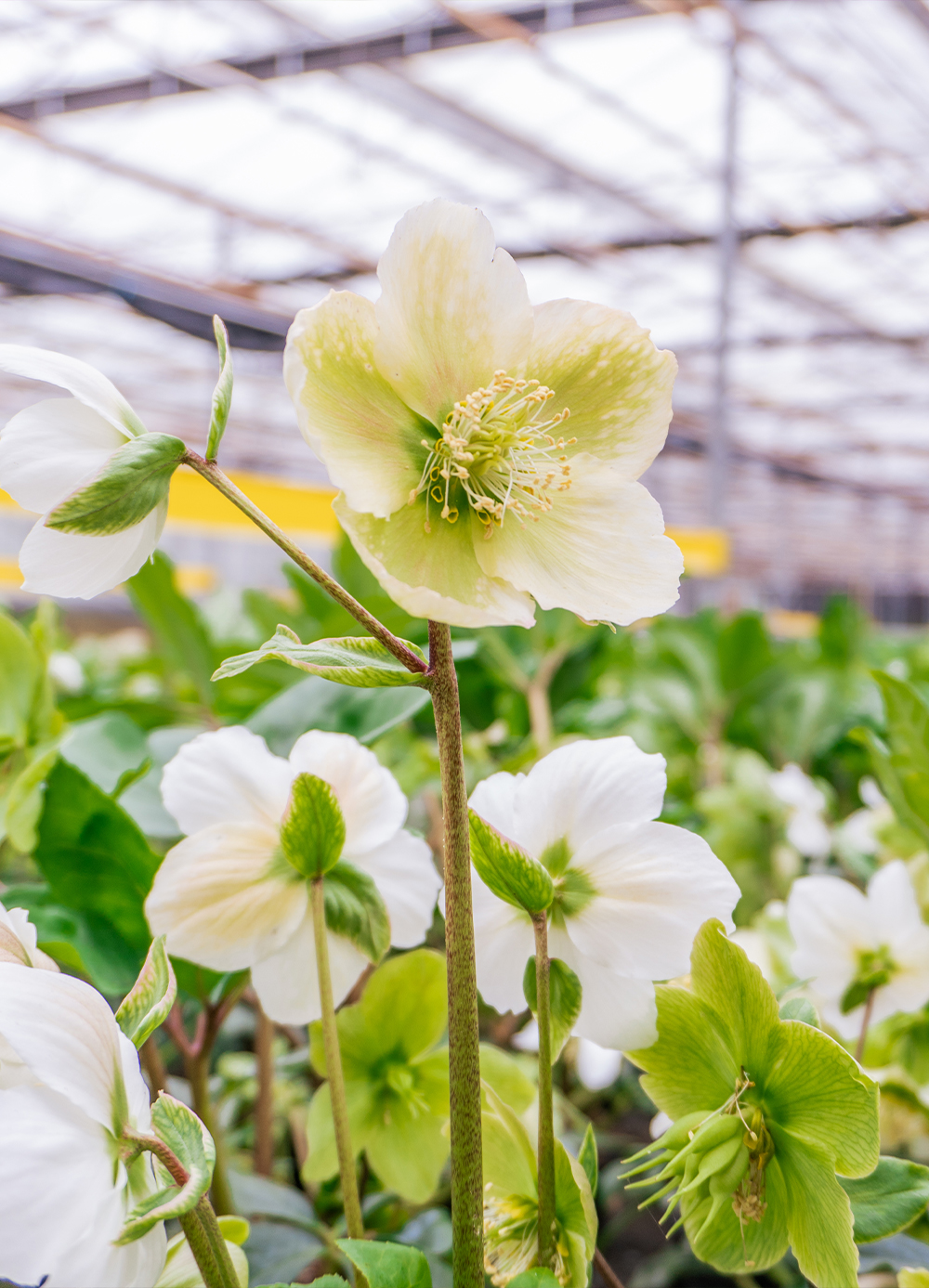
Hylotelephium ‘Matrona’
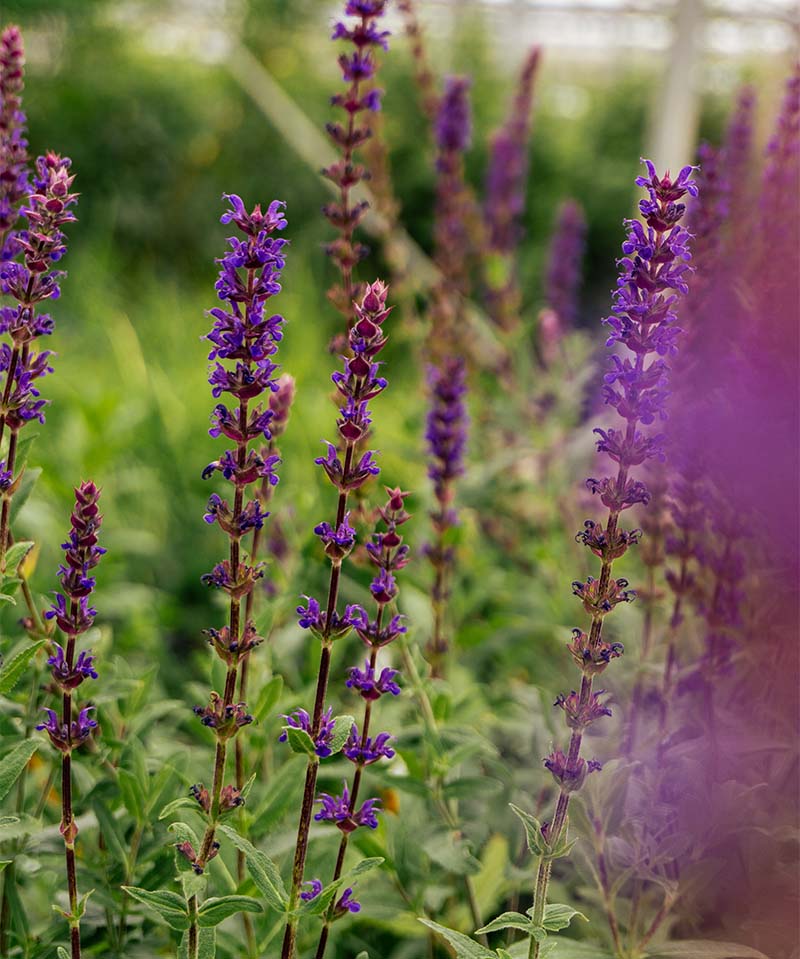
Salvia nemorosa ‘Caradonna’
Helleborus niger
Commonly known as Christmas rose, Helleborus niger is a semi-evergreen perennial with leathery, lobed, dark green leaves and sturdy stems bearing white or pink flushed flowers from January to February. Lovely for a cottage style garden and ideal for a partially shaded position.
Heuchera ‘Caramel’
A lovely variety of heuchera, with its honey apricot foliage and pink undersides. From June to August it blooms clusters of dainty, pale pink or cream flowers. Creates a statement at the front of borders, whilst also being ideal for containers.
Rudbeckia fulgida var. sullivantii ‘Goldsturm’
A perennial that’s prized for its large, daisy-like, yellow flowers with black-brown centres that bring vibrant colour from August to October. It’s particularly striking when planted in drifts and works well combined with ornamental grasses.
Salvia nemorosa ‘Caradonna’
A compact mound-forming perennial with rough, grey-green leaves and blue-black stems bearing upright racemes of violet blue flowers from summer to autumn. Ideal for planting in the front or middle of a sunny, Mediterranean themed border, or planting in containers.
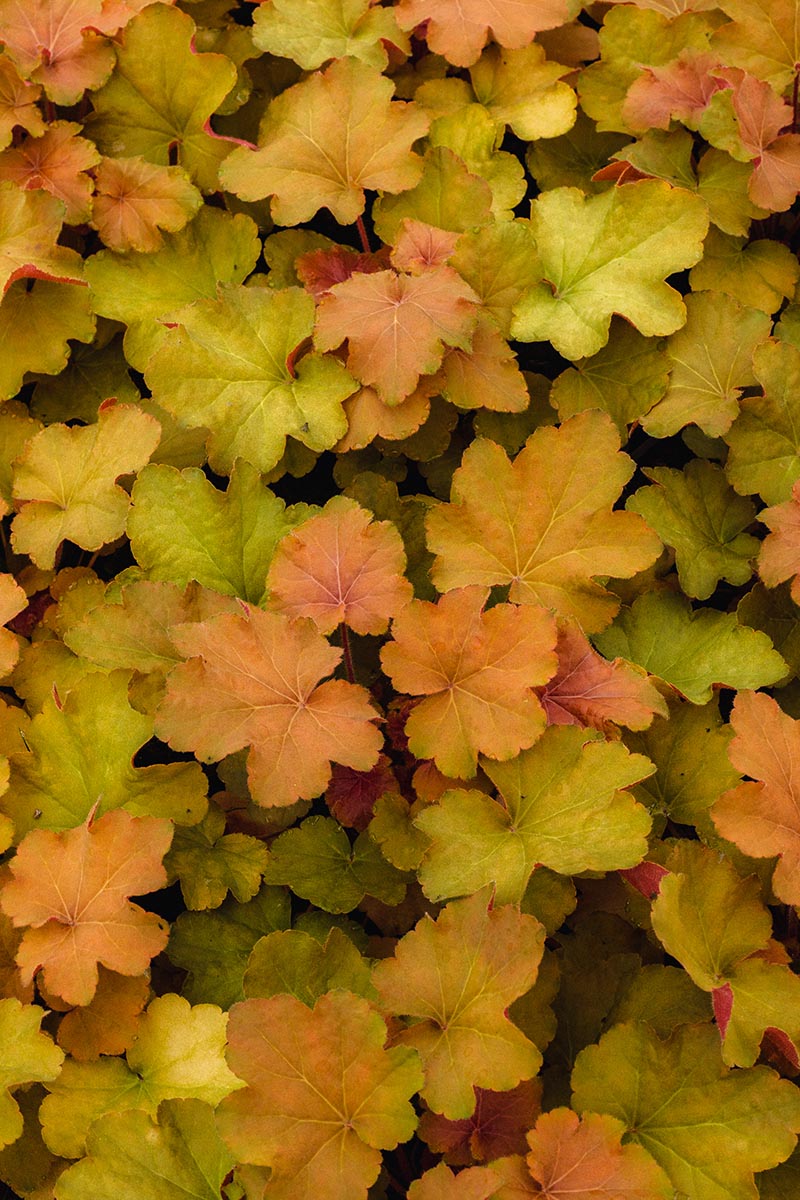
Hylotelephium ‘Matrona’
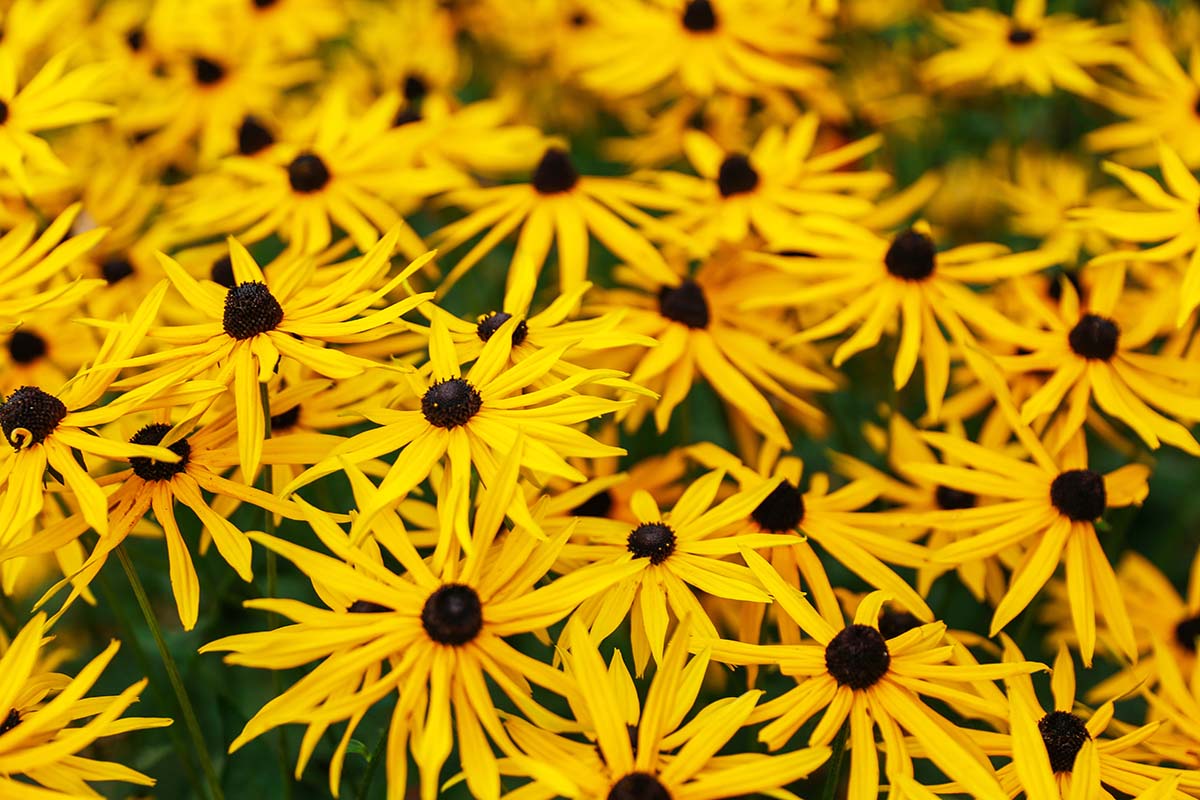
Rudbeckia fulgida var. sullivantii ‘Goldsturm’
At Greenwood Plants, sustainability is at the heart of everything we do. We are passionate about driving positive change, and we actively campaign to promote greener growing, recycling, and community planting.
We are encouraging councils and government agencies to “think perennially” and make the switch from traditional bedding plants to modern, sustainable perennials. The transition is a practical and environmentally responsible choice, with a number of benefits for our planet, people, and biodiversity.
Find out more about planting alternatives to bedding plants by contacting the G Team today, or take a look at our perennial display planting scheme by heading to our web page.

